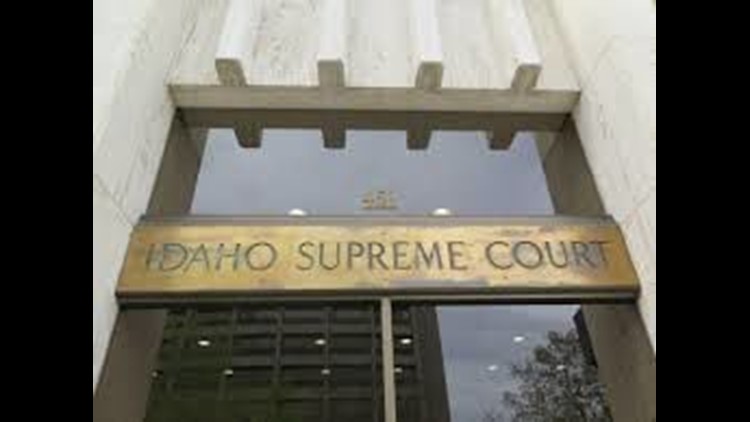BOISE, Idaho — This article originally appeared in the Idaho Press.
Canyon County and the city of Eagle have stepped forward to challenge Idaho’s new legislative redistricting plan, with Canyon County seeking to intervene in an already pending challenge from Ada County, and Eagle asking to file a brief backing that same challenge.
Among the issues are whether or not Emmett is in the Treasure Valley; whether it’s worth giving North Idaho voters more say than the rest of the state by drawing less-populated districts up there in order to split seven, instead of eight, of Idaho’s 44 counties between legislative districts; and whether Canyon County neighborhoods are adequately maintained in the plan.
Eagle is currently in a legislative district with Star, something the city’s filing said it prefers to continue. The new district plan, L-3, instead pairs Eagle with Emmett, which Eagle said is problematic “because the city of Emmett and portions of Gem County are very agricultural,” so the “values of the local governments and citizens do not align.”
Meanwhile, the state of Idaho has filed its initial response to the Ada County challenge and that of former Democratic state Sen. Branden Durst, contending their arguments are misplaced and the new plan, L-3, is legal and constitutional.
“One of the hallmarks of reapportionment is that perfection is unattainable,” Deputy Attorney General Megan Larrondo wrote in the state’s brief. “Some group, region or person will always be unhappy. … Plan L-3 is not perfect – no plan is – but it is legally permissible.”
Idaho’s bipartisan citizen redistricting commission found that in order to preserve the one-person, one-vote principle and draw legislative districts that are best able to comply with the U.S. Constitution’s equal protection clause, it had to split eight counties, including Ada County, the brief says. Three publicly submitted plans split just seven counties, but all gave more clout to North Idaho voters.
The brief also directly addresses the Eagle-Emmett issue.
“Contrary to Ada County’s arguments about the combination of urban and rural, Gem County is not ‘sparsely populated,’” Larrondo wrote. “While Ada County casts Emmett, Gem’s county seat, as an ‘agricultural community,’ it is more urban than Eagle as it has 2,731 population per square mile, as opposed to Eagle at 1,049 population per square mile.”
In addition, a state highway, Highway 16, connects Eagle and Emmett, the state noted, and a large percentage of Emmett residents commute to Ada County.
Larrondo wrote, “Ada County contends that Emmett is not part of the Treasure Valley. … But Emmett has long been tied to the Treasure Valley through its commuting workers and school participation in the 4A Southern Idaho Conference. Indeed, a majority of Gem County workers who work outside Gem County commute to Ada County.”
She also cited an Oct. 21 KTVB news report entitled, “How the Treasure Valley got its name.” It related how the Magic Valley was so named in 1937 by an area newspaper publisher, but it wasn’t until 1959 that the Snake River Valley, stretching from Mountain Home to Ontario, Ore., got the “Treasure Valley” moniker at the urging of Caldwell businessman Peter Olesen. The seed company owner and Chamber of Commerce president declared that the valley was a treasure trove of natural resources and commercial potential.
“The story not only discussed the history of both regions, but identified the traditional boundaries and counties within each region,” Larrondo wrote. “It noted that Gem County is part of the Treasure Valley.”
In addition to the Ada County and Durst challenges, there’s a pending challenge of the L-3 redistricting plan from the Shoshone-Bannock and Coeur d’Alene Tribes, and another from Pocatello resident Spencer Stucki; all four have been consolidated together for oral arguments before the Idaho Supreme Court on Jan. 14. Additional briefs, including the state’s response, are yet to be filed in the tribal challenge, which includes both the county-splits issue and arguments that the two reservations are improperly divided among legislative districts in L-3.
An additional legal challenge of Idaho’s new congressional redistricting plan, C-3, was filed by Elmore County resident Chris Pentico; he wants to substitute his own version, which like C-3 would also divide Ada County between the two congressional districts. Oral arguments in that case are set for Jan. 24.
Every 10 years, a citizens commission must redraw legislative and congressional district lines to preserve the one-person, one-vote principle in Idaho legislative and congressional elections, adjusting the districts for population changes shown in the most recent U.S. Census. Legal challenges are common in the process. The plans that win final approval will govern elections for the next decade, starting with Idaho’s May primary election.
This article originally appeared in the Idaho Press. Read more at IdahoPress.com
Watch more Local News:
See the latest news from around the Treasure Valley and the Gem State in our YouTube playlist:



